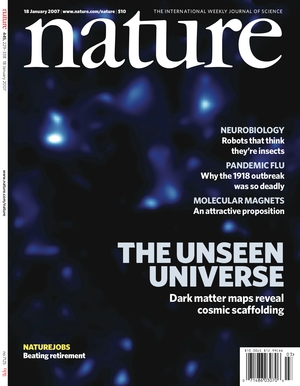Multimedia stuff
Copyright-free videos and images are available from the ESA press release, and some more images from the NASA press release. Diverse media outlets have reported the dark matter map, creating a further range of material.
High resolution figures and cover artwork of the dark matter map from Nature magazine.
Powerpoint slides suitable for a public lecture or a university physics department.
Audio recording of my public lecture at the American Museum of Natural History.
Related/inspired artwork
A discussion about the scientific and aesthetic decisions made while creating the press release images is available from our article in American Scientist, and has been reproduced in Visual Strategies (Yale University Press, ISBN 978-0300176445).
Vincent Tiley has used CNC techniques to realise the dark matter map in stunning sculptured form at the International Symposium for Electronic Arts, Albuquerque New Mexico.
Dieter Janssen created a mobile for the Shiny Pretty Things Toronto offsite design festival.
Karel Nel has worked with the rest of the COSMOS team from the beginning. His installation Trembling Field is currently on display at the Smithsonian Museum for African Arts, Washington DC.
Lars Lindberg Christensen has also produced a red/green stereo version of the mass map, and one with embedded cartoon galaxies.
Click the thumbnail images on the right for high resolution versions.
Raw data products
Images direct from the Hubble Space Telescope (and others) are freely available from the COSMOS archive.
The projected 2D dark matter map and three 2½D slices are available in .fits image format, an standard in the astronomical community that includes information on the absolute positioning of the image on the sky.
The 3D isodensity surface is available in .3ds, .obj and .c4d formats. However, that's only one isosurface. If you really want to start from scratch, the original 3D voxellated data (a voxel is a 3D pixel) is available as 32 slices of .tiff images or stacked into a data cube in Interactive Data Language (IDL) binary format, plus an IDL routine to plot it.
Thanks to Julien Lesgourgues, a weak lensing module is available for CosmoMC. It contains the statistical "3D power spectrum" data of the mass distribution, originally published in the Astrophysical Journal.





